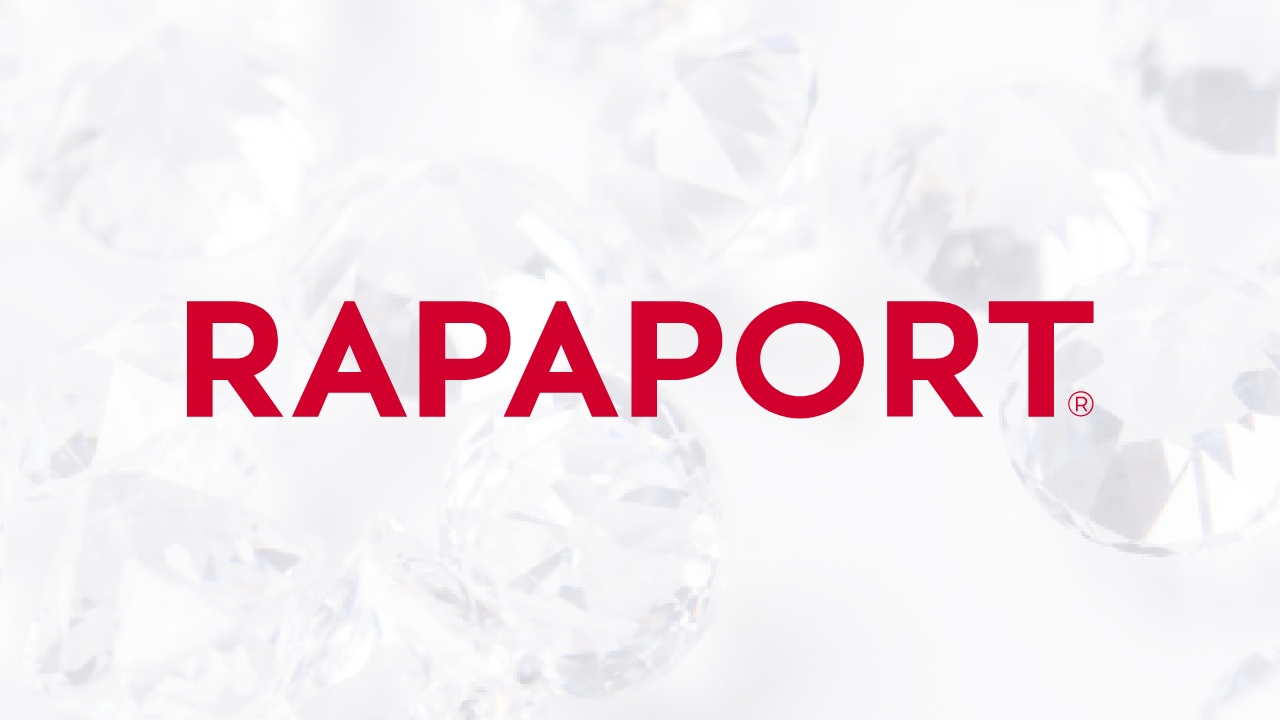Gareth Penny, executive director and the new sales director of the Diamond Trading Company (DTC), speaks with Martin Rapaport about De Beers’ proposed Supplier of Choice program. The interview took place before the European Commission’s approval of the LVMH merger and objections regarding the Supplier of Choice program.
 |
| Gareth Penny |
Martin Rapaport: What will happen when the new Supplier of Choice (SOC) program is implemented?
Gareth Penny: Our first step will be to decide on a definitive list of clients who will be DTC sightholders.
We don’t know whether that list will be shorter than the current list, because we are still in the process of assessing existing clients. We are also assessing many potential new clients because the DTC cannot be a closed club. In terms of competition law the opportunity to become a sightholder must be open and apply equally to existing sightholders as well as new firms.
We obviously have a long list of people who are interested in becoming sightholders and see this as an opportunity. All these companies need to be evaluated.
We have not started with a specific number of sightholders. We are open-minded. However, if we want to support people who are doing extraordinary things, we must free up diamonds for them.
We need to encourage winners, but we don’t think the winners necessarily have to be the large firms — they can be small companies that do innovative things. One of the wonderful aspects about our industry is that there are many niches. The niches may be geographic, product type, or specific marketing ideas focused on groups of consumers.
MR: How will the DTC decide on the list of SOC sightholders?
GP: We envisage that the list of sightholders would be based on the criteria that we laid out in our policy statement last year. We have identified six key criteria.
• Financial strength and ability to finance future growth.
• Market position as it relates to geographic position, niche markets and products.
• Distribution strategy — distribution channels and their efficiency.
• Marketing strategy — adding value through marketing and branding.
• Manufacturing and technical excellence.
• Compliance with the “DTC Best Practice Principles” — which also covers two related criteria.
MR: How will the DTC allocate the amount and type of rough diamonds to sightholders under the Supplier of Choice program?
GP: The proportion of available DTC rough sightholders get at the start and their future allocations will be assessed based on the standard criteria. We will obviously look very carefully at our first allocations, but the Supplier of Choice program and allocation system is not a one-time event but rather a long-term process that will change over time and adapt to new situations in the market.
Under the new Supplier of Choice program we will have a system with objective criteria for allocating our rough. Without disclosing other clients’ business secrets, we will be as open as we can with our clients about the amount of goods available and the priorities of our allocations. We have a strong sales planning component which will assure DTC supplies to those clients who have the market position, efficient distribution and capabilities to manufacture and market DTC goods most effectively.
MR: What are the additional features of the Supplier of Choice program?
GP: The key features of Supplier of Choice are:
• Sales Planning and Client Evaluation.
• Account Management.
• Trade Marketing and Advertising Support.
The second level of the Supplier of Choice support is our key Account Management system. Once we have decided on a sightholder’s allocation we will want to support them. Account management is an approach aimed at building relationships with sightholders by offering them products and services tailor-made to their individual requirements in order to support the development of their businesses. We have been working hard on building the skills of our own team and recruiting people from the outside. For example, we have recruited managers who previously worked for companies such as Schweppes and Elizabeth Arden to strengthen our abilities to provide value adding customer service for our clients.
The third level of Supplier of Choice is Trade Marketing and Advertising Support. This will involve a continuation of our generic advertising and a progressive unpacking of the kind of support measures that can help build our client’s businesses. At the base level you will see generic advertising supporting general demand for diamond jewelry. One level up from that might be a specific co-op advertising program where we will work to equip our clients to support their specific products.
MR: Will there be any limitation on the number of sightholders or a minimum size for a sightholder?
GP: There is no set limit for the number of sightholders, but obviously we have limits on the amount of goods available and we want to make sure that we can support the sightholders appropriately. Other than the financial criteria, size is not critical as small players can sometimes show better use of a box than large players.
MR: Are you going to have a directory or brochure of sightholders?
GP: Probably, but whether it’s going to be a public directory or not, we don’t know. It may be something on a sightholder or trade extranet.
MR: What is the sightholder extranet?
GP: This extranet is a secure link between the DTC and its clients. It is principally an information and communication tool.
MR: How will the DTC support specific value added programs?
GP: First of all we will provide a secure supply of rough to the firms who best satisfy the criteria. Sightholders would find it difficult to undertake a marketing program or joint venture without secure supply. We may also provide advice on marketing programs and branding as well as technical advice on manufacturing.
MR: Will the Supplier of Choice program continue in spite of the European Commission (EC) investigation?
GP: We have two submissions before the commission – the first is Supplier of Choice which is a voluntary notification. The way that a notification like this works is that you submit your notification to the Commission, which is not bound to respond to you in any particular time frame. Though you are able to carry on with your business, it is clearly useful to progress the proposal through a constructive and co-operative dialogue, which we continue to pursue with the Commission. We have decided to delay implementation of the Supplier of Choice program until we have pursued our dialogue further.
At the same time we have a mandatory submission regarding the LVMH-De Beers branding initiative. This mandatory submission has a specific timetable and a response by the EC is required by August 28.
MR: So you’re not going to put Supplier Of Choice off for years?
GP: No. I can’t tell you the exact time frame but it should not be delayed significantly beyond the planned date. We will certainly respond to issues raised by the Commission as the dialogue progresses.
MR: How can sightholders support marketing initiatives when boxes are trading at 10 percent below list?
GP: We are aware that some of our boxes are not profitable in the current market. As a result, in many instances we have taken goods out of boxes that are unsaleable to make our boxes more attractive. We are continually looking at how we can adjust the assortments to ensure that the boxes are more profitable.
MR: How much will the DTC sell this year?
GP: Our target is $4.8 billion.
MR: Given the weak markets why haven’t you lowered your target?
GP: $4.8 billion is simply an internal DTC target. This is not to say that we will necessarily meet it, particularly because, for example, there may be reduced demand at present.
MR: How are banks taking this situation?
GP: We think there are concerns and we have noted these.
MR: Have the banks asked you to slow down?
GP: The banks have been encouraged that we plan to sell at a lower level this year than we did last year.
MR: What happens if prices fall? If De Beers adjusts prices to be competitive with other suppliers what will happen? Do you think polished prices will go down? Will we get into a cycle of lower prices?
GP: We will be responsive to market conditions, but that does not imply a downward spiral of prices.
We believe that the market will turn and there are already some signs of this. There are some goods where light is starting to show through at the end of the tunnel and there are other goods that never went into the tunnel as they have always been robust. We believe that in the medium term the fundamentals of the industry are going to improve as the world economies improve, and as the Supplier of Choice program develops.
MR: Is there going to be an increase in demand?
GP: Yes. We are hopeful of an improvement towards the end of the year and would look for a better market in 2002.
MR: A year is a long time for people to survive. In a scenario where sightholders are not making profit manufacturing diamonds because DTC’s rough prices are too high, how can you expect them to spend more money on marketing? Where is the money supposed to come from?
GP: Many of those who are spending money on marketing, creating a differentiated product or service, and doing innovative things are running profitable businesses with the prices that we currently have.
MR: Are you saying that marketing is not an expenditure but rather an investment that should create higher profit margins at some time in the future?
GP: It is an investment and will create margin, but it may not do so immediately. One must invest and build over time. But in some instances we have been impressed at how quickly people have recouped their investment in marketing.
I don’t think we see it the way you have presented it: “Here’s rough and here’s polished; if you want people to spend money on marketing you have to lower rough prices.” People should invest money on marketing just as they would invest in anything else — to see a return.
MR: If you want to increase marketing why don’t you just put a tax on the goods you sell and do the marketing yourselves?
GP: Because we believe that the creative energies of thousands of men and women across the world are going to be infinitely stronger and greater than we could ever be as a centrist organization.
MR: When sightholders make more money due to their marketing investment will you leave them that money or will you then increase rough prices and take away the “extra” profits?
GP: We certainly expect people to profit from their investment and to obtain a return on capital that is needed to make this an exciting business. There is nothing new about that. I think any supplier would like to see the people they are doing business with in a very healthy position.
Furthermore, we want to make sure that sightholders have the money and incentive to put time and effort into marketing and recognize that this may take a long time. It would be very odd and short sighted of us, if no sooner than they were making the sort of margins that justified this vision, we would try to take away the profits. We want to move away from a trading mentality to a supplier mentality.
MR: In the current market do you think lower rough prices will bring polished prices down?
GP: It may. As you know rough is a relatively small percentage of the overall value of the retail diamond business. Seven billion dollars of rough plays $56 billion of diamond jewelry at retail. That is only 15 percent.
MR: What percentage of DTC rough will be allocated through the Supplier of Choice program?
GP: All of it. This does not mean that in the beginning all goods are going to be in marketing channels or anything like that. We would however like to apply the objective criteria to all clients and all goods.
MR: For how long will goods be guaranteed to a specific client?
GP: Eventually we would like it to be for five sights at a time.
MR: The exclusivity of the De Beers distribution system is worrying many people. Some are afraid that SOC will make it possible for some sightholders to corner markets for specific types of polished diamonds and create mini-monopolies.
GP: We have no intention of creating mini-monopolies. That’s one of the reasons why we see dealers as continuing to play a very important role.
MR: In their drive to establish added value marketing and distribution programs will SOC sightholders support and encourage inefficient and risky memo and long-term credit programs?
GP: We hope not. One of the reasons for the current “inefficient and risky memo,” as you describe these businesses, is because supply exceeds demand. Sellers are willing to do anything with their goods to get them out of their hands.
We believe that Supplier of Choice will increase demand and help to address these issues.
MR: So Supplier of Choice does not reward memo programs?
GP: Not if by memo programs you mean that goods are simply left with retailers, unpaid for in a program without focused marketing efforts behind those goods.
MR: But a lot of the large sightholders that will be getting goods under the Supplier of Choice program are in fact the world’s biggest memo suppliers.
GP: We believe that through stimulating demand and product differentiation, the type of memo program you described earlier will be improved.
MR: So the Supplier of Choice will give a higher criteria to marketing programs that are more cash driven.
GP: I don’t think it needs to work that way particularly. In the current market you have an excess of supply over demand. If we can drive additional consumer demand for diamonds, and create excitement for them, you will find that people will naturally get paid for their goods more quickly.
MR: What impact do you expect Supplier of Choice to have on the nonsightholders?
GP: Overall we expect it to have a very positive influence on the diamond business as a whole.
MR: How will that happen?
GP: While it may not happen in the short term, over a period of time we believe Supplier of Choice will play a major role in changing the fortunes of diamond business. Consider that between 1990 and 1999 diamond jewelry consumption had a negative 0.2 percent real growth rate. Demand for diamond jewelry in real terms was flat for a decade. That is in spite of the fact that the major U.S. market was very strong.
MR: So what is Supplier of Choice going to do to change that?
GP: A rising tide raises all ships. We believe if a significant portion of the world’s diamonds are distributed through efficient channels and supported by strong marketing and branding propositions, a higher level of consumer demand and confidence will be developed. That will be good for the entire industry.
This is why we have been very happy to talk openly with you and for the industry and other producers to know. We’re not sitting behind a closed wall with a secret strategy. If all the players in the industry understand the challenge and are able to create a more efficient marketing orientated industry that is better able to compete with other luxury products — then that will be good for all of us.
MR: What is going to happen to the availability of goods on the open market? If DTC goods are efficiently target marketed to consumers, will small jewelers find the stones they need?
GP: First of all our market share has gone down from over 80 percent to about 60 percent. So at least 40 percent of the outside goods continue to be available. There is therefore a high volume of outside supply and people should not look to us as the only source.
Secondly, at no stage have we ever said that Supplier of Choice is antidealer. It’s not. What we are saying to the dealers is that they, as well as the manufacturers, must be accountable for what they do. A dealer can have 100 clients and they can be small manufacturers selling small retailers. That’s fine. We just want to make sure that the most effective and efficient marketing oriented retailers get the goods.
MR: Many of the smaller people are very afraid. Smaller retailers are often not affiliated with any specific marketing programs. They are selling the trust and confidence they have built up over many years. They are not selling programs.
GP: We agree with that. Many large wholesalers supply a great number of mom and pop stores. Just because independent jewelers do not have size or scale doesn’t make them ineffective. We have a number of clients who are putting together innovative ideas, collecting groups of retailers and giving them a whole range of support materials and ideas that will allow them to compete effectively.
If a client comes to us and needs certain goods that he can manufacture and sell to a wholesaler that supplies many small jewelers, we may find that compelling. Just because the distribution system is not based on large retail operations doesn’t hurt the proposal. Smaller firms can work well within the DTC Supplier of Choice system.
MR: What about the smaller diamond manufacturers? Is there a future for them in the diamond business? Perhaps they should just give up?
GP: I fundamentally disagree with you. If someone has a competitive advantage in the pipeline they should be able to access the goods. If they don’t seek to compete by adding value then it’s much more difficult.
MR: Do you think the dealer business must be more robust so they can supply the smaller diamond manufacturers?
GP: One needs to be careful of getting into a way of thinking that is not based on economic logic. Take your small manufacturer. It may be difficult for him to supply a Zales or a Sterling but he may have an advantage in supplying small retailers. After all, there are large supermarkets but there are also many
corner stores.
MR: And sometimes corner stores are much more profitable than the large consumers.
GP: Exactly. We need to find the right balance between supporting the big organizations who drive multi-programs with mass marketing and the dealers who supply the efficient value adding, firms who are filling in the edges.
MR: What advice do you have for small diamond manufacturer, small diamond dealers and small retailers?
GP: Be enormously excited and optimistic about the future. This is going to be an industry that can look forward to a period of growth and renaissance.



